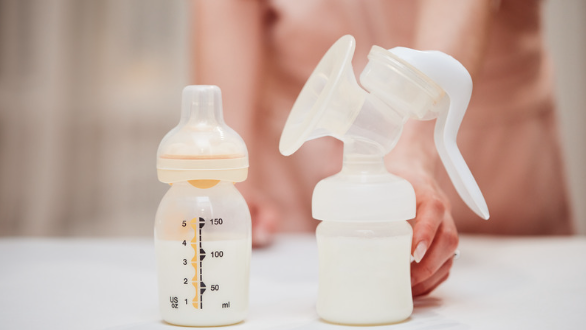How To Maximize Milk Volume When Pumping
Pumping is a part of pretty much every breastfeeding mom's routine, whether that occurs on a daily basis at work, to boost supply, or just to create an emergency stockpile for the freezer. Since our schedules are already busy enough, every mom hopes to be as effective as possible with pumping efforts to get the most bang for her buck! So what are the things we can do to get the most milk volume when pumping?
Using a High-Quality Pump
Not all pumps are created equal. The two most important factors that go into pump quality come down to the system type and strength of the motor. Many brands love to market their pumps as "Hospital Grade," but the FDA does not regulate breast pumps, so there is no special benchmark a pump needs to meet to have this label. Sadly the term ‘hospital grade’ is a marketing gimmick. I prefer to take the brand into consideration more than anything else. By far, clients share the most positive feedback for Spectra pumps (I can't remember a single person ever saying they don't love Spectra), and Medela is a very respected brand widely used in hospitals. We also enjoyed the hands-free Willow Breast Pump and found it comfortable and easy to use.
It's also important to take the system type into consideration. While the wireless pumps are awesome for convenience (especially for working moms), their strength and quality generally do not compare, and we usually recommend using a wired pump when possible.
Using the Correct Flange Size
Another key factor in making pumping as beneficial as possible is using the correct flange size. The current recommendation is to try and use a flange that is small enough so that your areola (the darkened circle around the nipple) is not pulling into the tunnel of the flange - we really only want the nipple (the part that everts and has ductal openings) pulling into the tunnel.
That being said, most nipples tend to swell and expand when you pump, so we also want the flanges large enough so there can still be movement of the nipple. Using a nipple cream before you pump can be helpful in making things more comfortable as it provides lubrication. Comfort is important to consider- if one size feels much more uncomfortable than the other, it is probably the right choice. Generally, if you are using the wrong flange size, you may see less milk.
Utilizing Breast Massage and Compression
I often encourage moms to use their hands to apply gentle pressure and massage when their baby is feeding, and any time they are pumping. We call this "hands-on pumping," and it is shown to boost milk volume. There are so many benefits of providing deep ductal tissue stimulation (think hand expression) that help move milk in ways that the pump can't. This can be done for a few minutes before pumping, or you can try using a nursing bra to hold your pump in place to free up your hands during the session. Remember, breast stimulation should be gentle and not cause pain, bruising, or tissue damage. While breast massaging tools are nice in theory, they should be used gently, as I often have moms come in with bruising from them.
Skin to Skin
One of the magical parts of our lactating bodies is that skin to skin contact with your baby and their smell and sounds all release those wonderful hormones that cause milk production and letdown. If you can squeeze in 10 minutes of skin-to-skin with your baby on your chest before you pump (or during if you are extra skilled), this may help you see higher volumes. When at work, try watching a video of your baby- moms do say this trick really works!
Frequency is More Important Than Duration
If you are pumping to boost supply or provide supplements to your baby, the frequency of your pumping sessions is much more important than the length of the session. I recommend pumping for 15 minutes or a bit longer if you are still actively expressing milk. Trying to go much longer does not have the same benefits as fitting more sessions during the day.
Conclusion
Ahh, breast pumps. We love and hate them... but there's usually no getting around them! Some women love them so much that they choose to use them exclusively! No matter how you fit pumping into your routine, it's everyone's goal to collect as much of that precious liquid gold as possible. Try out these pointers, and let us know which one worked the best for you!


